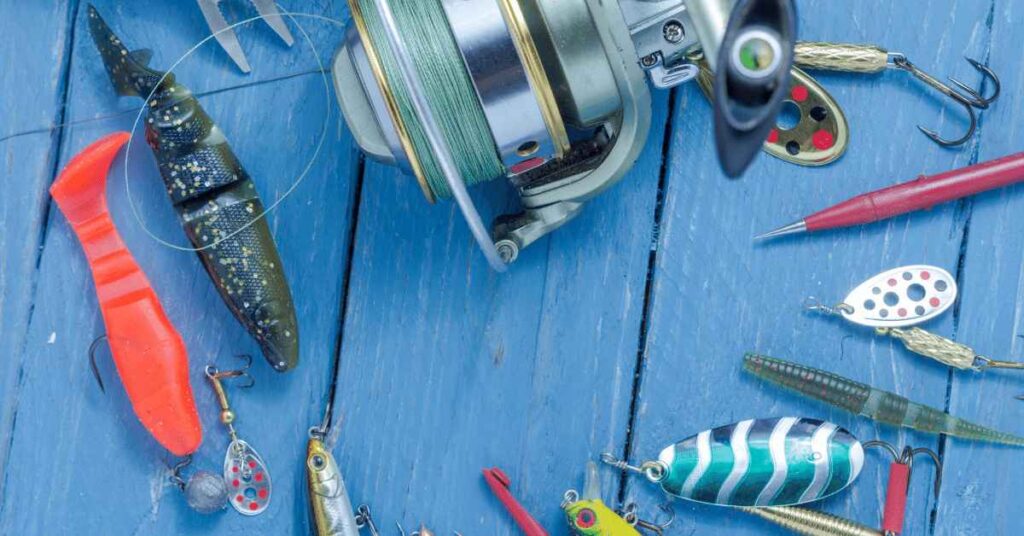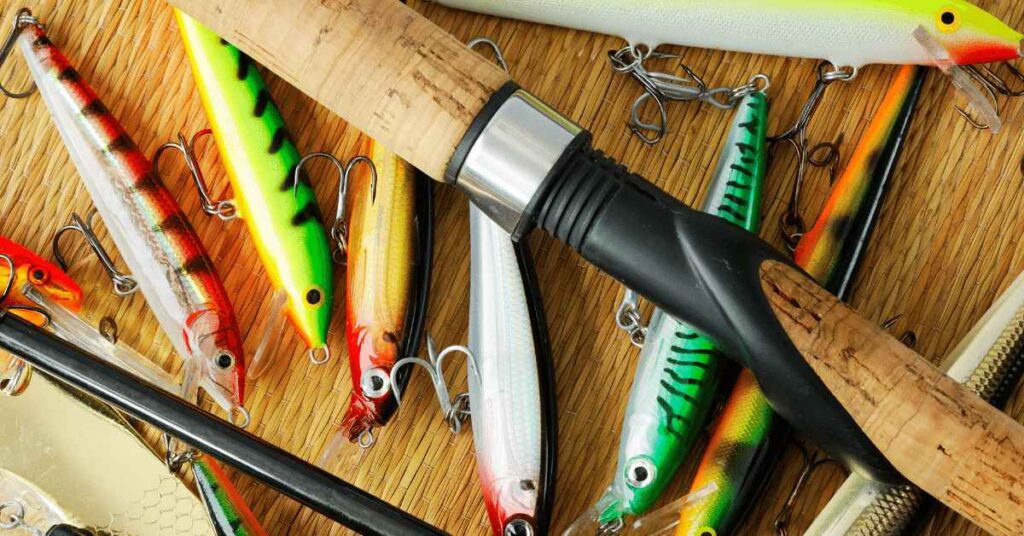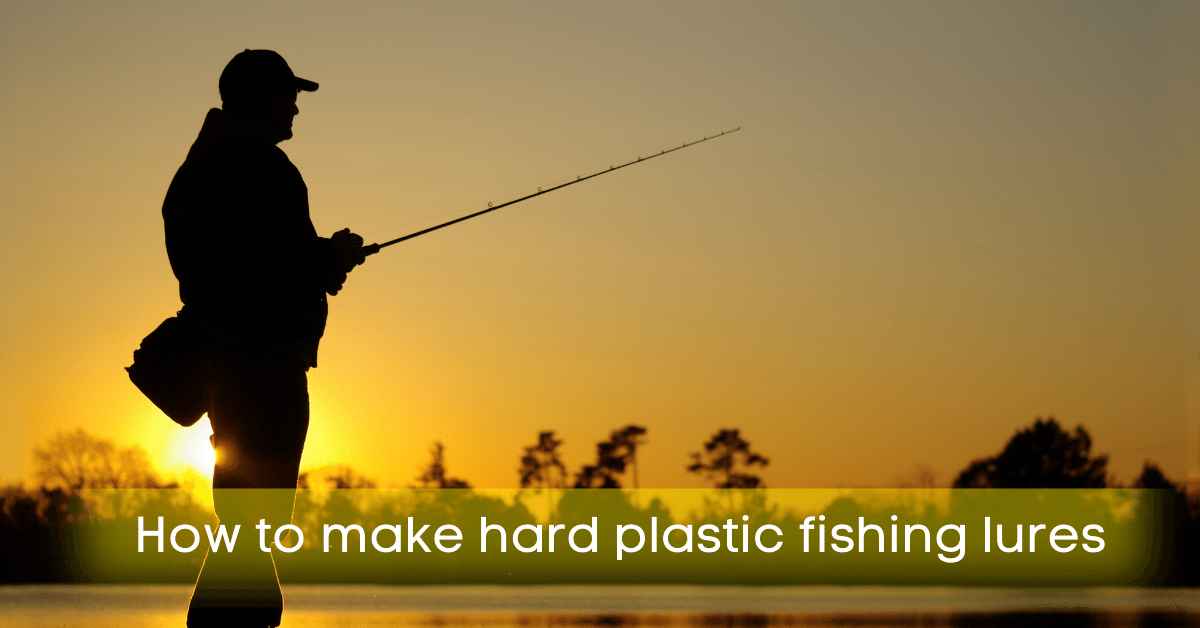Fishing enthusiasts know the importance of using the right gear to increase their chances of success. One essential piece of equipment is the angling lure, which can attract fish and make the catch easier. While various types of lures are available, making your own hard plastic fishing lures can be an exciting and cost-effective alternative. You can create customized lures with suitable materials and techniques that suit your preferences and the type of fish you’re targeting. This guide will discuss how to make hard plastic fishing lures. So, let’s dive in.
What You’ll Need

Before you start making hard plastic fishing lures, you’ll want to get your hands on the following equipment and supplies:
Equipment:
- Hard plastic pellets
- Colorants or dyes
- Glitter or other additives (optional)
- Mold release spray
Tools:
- Melting pot or double boiler
- Stirring utensil
- Measuring cup and scale
- Mold (silicone or aluminum)
- Safety equipment (gloves, goggles, mask)
Procedures in Detail to Making Hard Plastic Fishing Lures

Creating hard plastic fishing lures is a rewarding and cost-effective way to make customized fishing gear. However, the process requires preparation, patience, and attention to detail. Step-by-step instructions for creating hard plastic fishing lures:
Designing the Lure
A catchy pattern to create hard plastic angling lures would be best. It is possible to do this by drawing the design by hand or employing specialist software. The method should provide the lure’s dimensions, materials, and other features.
Preparing the Mold
Once you have your lure design, the next step is preparing the mold. You can use either silicone or aluminum molds. Before pouring the plastic, spray the mold with a mold release spray to prevent the plastic from sticking.
Mixing and Pouring the Plastic
Using a double boiler, melt the hard plastic pellets. Add colorants, dyes, and glitter after melting the plastic. Mix well.
Pour the mix into the mold. Fill the mold and tap carefully to remove air bubbles.
Cooling and Demolding
After pouring the plastic, let the mold cool down. The cooling time will depend on the size and thickness of the lure. Once the plastic is cooled, remove the trap from the mold. If the trick is difficult to remove, gently twist the mold or use a demolding agent.
Trimming and Finishing
Trimming and finishing the lure concludes. Remove the edge plastic with scissors or a knife. Add lure hardware like hooks and eyes. Sand the appeal to remove rough edges and use it.
Tips and Tricks for Making Hard Plastic Fishing Lures

Some tips and tricks can help you create compelling and long-lasting interests when making hard plastic fishing lures. Some of the most valuable techniques for creating hard plastic fishing lures are as follows:
- Experiment with colors and additives: Adding colorants, dyes, and glitter to your plastic mixture can create unique and eye-catching lures. You can also experiment with different additives, such as scent, to attract more fish.
- Use a mold release spray: Applying a mold release spray to your mold before pouring in the plastic can make demolding easier and prevent the plastic from sticking to the mold.
- Wear safety equipment: When melting the plastic, wear safety equipment such as gloves, goggles, and a mask to protect yourself from burns and fumes.
- Use a scale to measure the number of plastic pellets accurately: Accurately measuring the number of plastic shots you use can help ensure consistent results and avoid wasting materials.
- Trim and finish carefully: Once the plastic has cooled and the lure has been removed from the mold, use scissors or a knife to trim any excess plastic around the edges carefully. Sand the attraction to smooth out rough edges, and add the hardware, such as hooks and eyes, to complete the lure.
These tricks will help you make fishing lures made of rigid plastic that are both effective and visually appealing. No matter your fishing experience, fishing, crafting your interests can be a fun and rewarding way to enhance your fishing experience.
Safety Precautions
When it comes to the fabrication of hard-plastic fishing lures, safety should, at all times, be the priority. The following preventative steps are crucial.
- Wear protective gear: Before working with liquid plastic, Safety goggles and gloves protect your eyes and hands—skin from splashes or spills.
- Work in a well-ventilated area: Liquid plastic emits dangerous fumes. Work in a well-ventilated area with plenty of fresh air to prevent this.
- Please avoid direct contact with the skin: Liquid plastic can be hot and sticky, so be careful not to touch it directly with your bare skin. If you come into contact with the plastic, immediately rinse the affected area with cool water.
- Keep heat sources away: When using a heat gun to cure the plastic, keep it away from any flammable materials, as the heat can cause them to fire.
- Keep children and pets away: Liquid plastic and the tools used to make fishing lures can be dangerous for children and pets, so make sure to keep them away from your work area.
By following these safety precautions, you can minimize the risk of accidents and ensure your experience of safe and fun hard plastic fishing lure creation.
Final Thought
Creating fishing lures made of rigid plastic is a fun and cost-effective way to create customized fishing gear. You can create durable and effective baits with suitable materials and techniques that will help you catch fish. However, taking safety precautions when working with chemicals is essential to avoid harming yourself or others. If you follow the advice in this manual, you will create high-quality lures unique to your preferences and target fish. So, why not try it and see what special lures you can make? Happy fishing!
FAQ
What are hard plastic fishing lures?
Hard plastic fishing lures are artificial bait anglers use to mimic natural fish behavior and attract them toward the hook.
What materials are needed to make hard plastic fishing lures?
For customization, you will need a few basic materials like a mold, a two-part epoxy or polyester resin, and plastic colorants or glitter.
How to make hard plastic fishing lures?
Firstly, prepare the mold by applying a mold release agent, then mix the two-part epoxy or polyester resin and add colorants or glitter as desired. Then, let the mixture set in the mold after it cures for a specified time. Once cured, remove the lure from the mold and add any final touches.
What kind of mold is required for making hard plastic fishing lures?
You can use a variety of molds, such as silicone, aluminum, or PVC, to make hard plastic fishing lures. The mold you choose will depend on the size and shape of the draw you want to create.
What safety precautions should be taken while making hard plastic fishing lures?
Always wear gloves, safety glasses, and a respirator to avoid contact with harmful chemicals in the resin. Ensure the workspace is well-ventilated and keep children and pets away from the area.
Can I reuse the mold to make more hard plastic fishing lures?
Yes, you can reuse the mold to make multiple lures. However, clean and dry the mold properly before reusing it.
Are there any tips for making high-quality hard plastic fishing lures?
To make high-quality lures, ensure that the mold is free of air bubbles and that the colorants or glitter are well mixed. You can also experiment with different shapes, sizes, and colors to create unique and effective lures.











